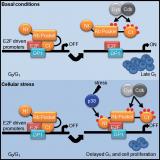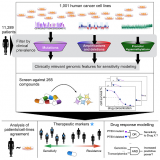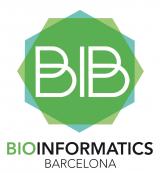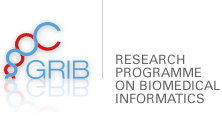
16/09/2016
Cellular stress activates an important anti-cancer protein
Researchers at UPF have discovered that the RB protein, responsible for stopping cell proliferation and therefore preventing tumor formation, is activated under cellular stress. The Structural Bioinformatics group of GRIB led by Baldo Oliva has participated on this work led by Eulàlia de Nadal and Francesc Posas, leaders of the research group on Cell Signaling of the UPF.
The study has been published in the journal Molecular Cell and shows that RB is also important to stop cell progression in response to cellular stress. Under these conditions, the brake is essential for cell survival. A very remarkable fact is that this new mechanism predominates over others that normally regulate the activity of RB. Therefore, the external activation of this mechanism could be used to block cell division.
As Francesc Posas, co-leader of the study says, "this discovery may be relevant in cancer biology because RB is a key protein in cell proliferation and many types of tumor coincide on the inactivation of this protein. If we get to reverse this inhibition, we could stop proliferation."

6/9/2016
Researchers of GRIB participate in a crowdsourced assessment of the treatment response in rheumatoid arthritis
The researchers of the Structural Bioinformatics group of GRIB (IMIM-UPF), led by Baldo Oliva, recently participated in the Reumatoid Arthritis (RA) Responder challenge in which participants had to identify individuals most likely to fail response to RA therapies. The study was awarded with the first prize, it was presented at the Seventh Annual RECOMB/ ISCB Conference and has been eventually published at the Nature Communications magazine.
Rheumatoid Arthritis (RA) is a debilitating autoimmune disease that affects millions world-wide and manifests through proinflammatory joint damage. Reducing inflammation is essential to prevent long-term deleterious effects in RA.
Article reference: Sieberts SK, Zhu F, García-García J, Stahl E, Pratap A, Pandey G, Pappas D, Aguilar D, Anton B, Bonet J, Eksi R,Fornés O, Guney E, Li H, Marín MA, Panwar B, Planas-Iglesias J, Poglayen D, Cui J, Falcao AO et al (including Oliva B). Crowdsourced assessment of common genetic contribution to predicting anti-TNF treatment response in rheumatoid arthritis. Nature Communications, 2016; 7: 12460. DOI: doi:10.1038/ncomms12460.

1/9/2016
Researchers of GRIB take part in the first major open source drug discovery trial
The prestigious journal PLoS Pathogens has just published an article on the results of the Malaria Box project, an initiative of the Medicines for Malaria Venture that has given free, open access to new families of antimalarial molecules to 200 laboratories from 30 countries. The purpose of the project is to encourage new pharmacological discoveries that make it possible to fight neglected diseases and other illnesses and has already initiated more than a dozen projects aimed at developing new drugs for various diseases.
The Systems Pharmacology group of GRIB (IMIM-UPF) led by Jordi Mestres, has participated in this extensive study to determine any safety issues with Malaria Box compounds deriving from their interaction with human proteins.
"The global effort has led, not only to charactersing the mechanism of action of one third of the Malaria Box compounds as well as determining their potential toxicity and human safety indicators, but it has also identified new opportunities for reusing some of the compounds to develop new drugs for combatting babesiosis, toxoplasmosis, trypanosomiasis, cryptosporidiosis, schistosomiasis, and filariasis pathogens, among others, many of which have been neglected by the industry until now", explains Jordi Mestres.

3/8/2016
Tutorial on DisGeNET platform at the European Conference on Computational Biology 2016
We are pleased to announce the tutorial "DisGeNET: a discovery platform to support translational research on human diseases" at the European Conference on Computational Biology 2016. The tutorial will be held by Janet Piñero and Laura I. Furlong, postdoctoral researcher and head of the Integrative Biomedical Informatics group of GRIB (IMIM - UPF) respectively, on September the 4th, and is aimed at a variety of audiences: computational biologists, systems biology users, biologists, and healthcare practitioners.
DisGeNET is a discovery platform integrating information on gene-disease associations from several public data sources and the literature. DisGeNET integrates expert-curated databases with text-mined data, and it is one of the largest available repositories of its kind.
Click here for the online registration at the tutorial.
The ECCB 2016 will take place on 3-7 September and is jointly organized by the Dutch Techcentre for Life Sciences, the BioSB research school and ELIXIR, in association with the Vrij Universiteit Amsterdam and the Delft University of Technology. The ECCB 2016 will take place in the historic city of The Hague in the Netherlands. It is the main computational event in 2016 and will welcome scientists working in a variety of disciplines, including bioinformatics, computational biology, biology, medicine, and systems biology. Participating in ECCB 2016 will be the perfect opportunity to keep pace with cutting edge research, and to network with members of ECCB community.

3/8/2016
Investigadores del GRIB participan en un estudio que investiga por primera vez la regulación de los genes en un primate mientras hiberna
En el estudio, publicado en la revista Genome Biology and Evolution, han participado José Luis Villanueva-Cañas y Mar Albà, investigador postdoctoral y jefe del grupo de investigación en genómica evolutiva del GRIB (IMIM-UPF), respectivamente, que han realizado la parte computacional y de análisis de datos, así como investigadores del Duke Lemur Center y de la Universidad de Duke.
En este trabajo se investiga por primera vez la regulación de los genes en primates hibernados, en concreto el lémur enano de cola gruesa (cheirogaleus medius), una especie excepcional muy poco estudiada y la única capaz de hibernar, subsistiendo con los lípidos que ha almacenado en la cola durante el resto del año. El trabajo además es uno de los pocos estudios sobre la hibernación que utiliza una técnica moderna llamada RNAseq que permite ver a nivel global qué genes se están expresando y cuantificarlos.
Según el Dr. Villanueva-Cañas, actualmente investigador del Instituto de Biología Evolutiva (UPF-CSIC) "aparte del interés biológico, el estudio de la hibernación es muy interesante también desde el punto de vista médico, ya que estamos hablando de animales que disminuyen drásticamente su metabolismo (temperatura, respiración, ayunas, actividad cerebral, etc) a unos niveles que serían letales para especies sin esta adaptación" y añade "dado que encontramos muchos mamíferos capaces de hibernar sin un patrón claro, creemos que el ancestro común a todos los mamíferos quizá tenía la capacidad de hibernar. Esto querría decir que muchos de los genes involucrados están también presentes en humanos y sería cuestión de averiguar cuáles son y cómo podemos manipularlos por nuestros intereses". Los investigadores han encontrado 90 genes, que incluyen genes involucrados en el metabolismo de los lípidos, la regulación del apetito o los ritmos biológicos.

15/07/2016
Jordi Mestres, membre del Scientific Advisory Board del portal Chemical Probes
Felicitem a Jordi Mestres, coordinador del grup de recerca en Farmacologia de Sistemes del GRIB (IMIM-UPF) que ha estat escollit membre del Scientific Advisory Board del portal Chemical Probes, una eina accessible des d'internet i gratuïta que permet als investigadors, abans de començar una recerca, buscar la sonda química més apropiada per al seu projecte. Les sondes químiques o chemical probes, són unes molècules molt petites que interaccionen amb múltiples proteïnes i que tenen un impacte molt gran en la recerca biomèdica ja que si són de baixa qualitat, poden generar resultats científics erronis. Conèixer la interacció d'aquestes petites molècules, és clau en el desenvolupament de fàrmacs més eficients i segurs.
Aquest innovador portal recomana als investigadors sondes químiques basades en les aportacions del Scientific Advisory Board, un grup d'experts en el camp de la biologia química, medicina química, farmacologia i camps relacionats, que estan qualificats per determinar les millors sondes químiques disponibles i establir pautes adequades per a la seva utilització.

08/07/2016
Cancer cell lines predict drug response
Large-scale study could increase success rate of developing personalised cancer treatments
Research published in Cell has shown that patient-derived cancer cell lines harbour most of the same genetic changes found in patients' tumours, and could be used to learn how tumours are likely to respond to new drugs, increasing the success rate for developing new personalised cancer treatments.
David Tamborero and Núria López-Bigas, members of the Biomedical Genomics group of GRIB (UPF-IMIM) have participated on this international study led by scientists from the Wellcome Trust Sanger Institute, the European Bioinformatics Institute (EMBL-EBI) and the Netherlands Cancer Institute, discovering a strong link between many mutations in patient cancer samples, and the sensitivity to particular drugs. This could advance personalised cancer medicine by leading to results that help doctors predict the best available drugs, or the most suitable clinical trials for each individual patient.
In the first systematic, large-scale study to combine molecular data from patients, laboratory cancer cell lines and drug sensitivity, David Tamborero says: "one of the main difficulties of the study was to interpret the large amount of genomic alterations observed in the tumor cells', and continue: "our task was to identify the mutations that are important for the development of each of the cancers in order to associate them with the observed drug responses".
Click here to read the full Press Release of the Wellcome Trust Sanger Institute.

4/7/2016
"El coll d'ampolla és ara en la interpretació de dades"
La gran quantitat de dades generades per la biomedicina ha donat peu, en els darrers anys, a una nova branca de científics: els bioinformàtics. En aquest camp excel·leix Núria López-Bigas, que ha estat distingida amb el premi Fundació Sabadell a la investigació biomèdica. Rebrà el guardó el dia 12 a Barcelona.
Veure entrevista a Núria López Bigas, investigadora ICREA del GRIB a El Punt avui clicant aquí.

15/06/2016
BIB launches its website to boost visibility of catalan bioinformatic potential
Bioinformatics Barcelona Association (BIB) launches its website www.bioinformaticsbarcelona.eu, which aims to be a reference in the bioinformatic sector at national and international level, and to become the platform for communication and interaction among BIB's partners. Through this website, the association has enhanced its digital presence to become a meeting-point facilitator of initiatives and a think tank for the bioinformatic community.
The portal contains sections on the BIB partners and their research groups in the bioinformatic field, and on education and training, job offers and internships, news, activities and news clipping, as well as a section with specific information on the association itself. Ferran Sanz, Director of GRIB is the Vice-President of the Association's Board of directors.

6/6/2016
A new energy source within the cells
In a paper published in Science, researchers at the Centre for Genomic Regulation (CRG) led by group leader Miguel Beato in collaboration with Baldo Oliva and Jaume Bonet, head and postdoctoral researcher respectively of the Structural Bioinformatics group of GRIB (IMIM-UPF) and researchers of the IRB in Barcelona and the URV in Tarragona have described for the first time a new pathway generating energy within the cell nucleus for remodeling chromatin and reprogramming gene expression. They have also identified the function of enzymes involved at every step of this process and how they are activated in response to stress signals. Their results, will help in understanding the mechanisms underlying chromatin remodelling, its relationship with DNA damage and, by extension, with cancer.
" Exceptional situations call for extraordinary measures. When cells need to cope with a global reprogramming of gene expression they require a lot of energy in the nucleus. In these situations the cells block their mitochondrial and cytosolic ATP production to be focused on the main task in the nucleus," says Miguel Beato, principal investigator of this paper.
Article reference: Wright R, Lioutas A, Le Dily F, Soronellas D, Pohl A, Bonet J, Nacht AS, Samino S, Puchades Carrasco L, Font-Mateu J, Vicent GP, Wierer M, Trabado MA, Schelhorn C, Carolis C, Macias MJ, Yanes O, Oliva B, Beato M. ADP-ribose-derived nuclear ATP synthesis by NUDIX5 is required for chromatin remodeling. Science, 352 (6290), 1221-1225. doi: 10.1126/ science. aad9335



